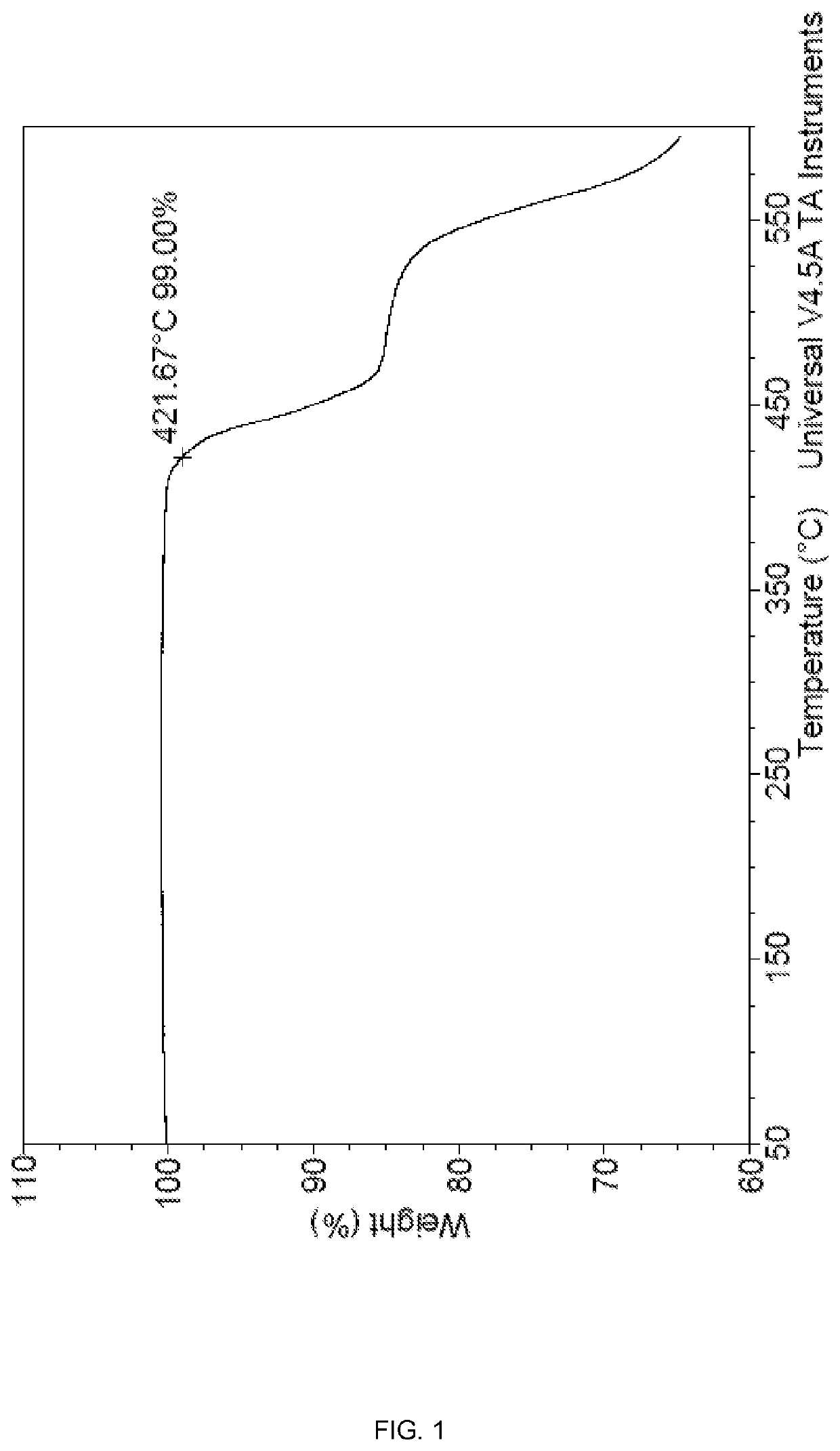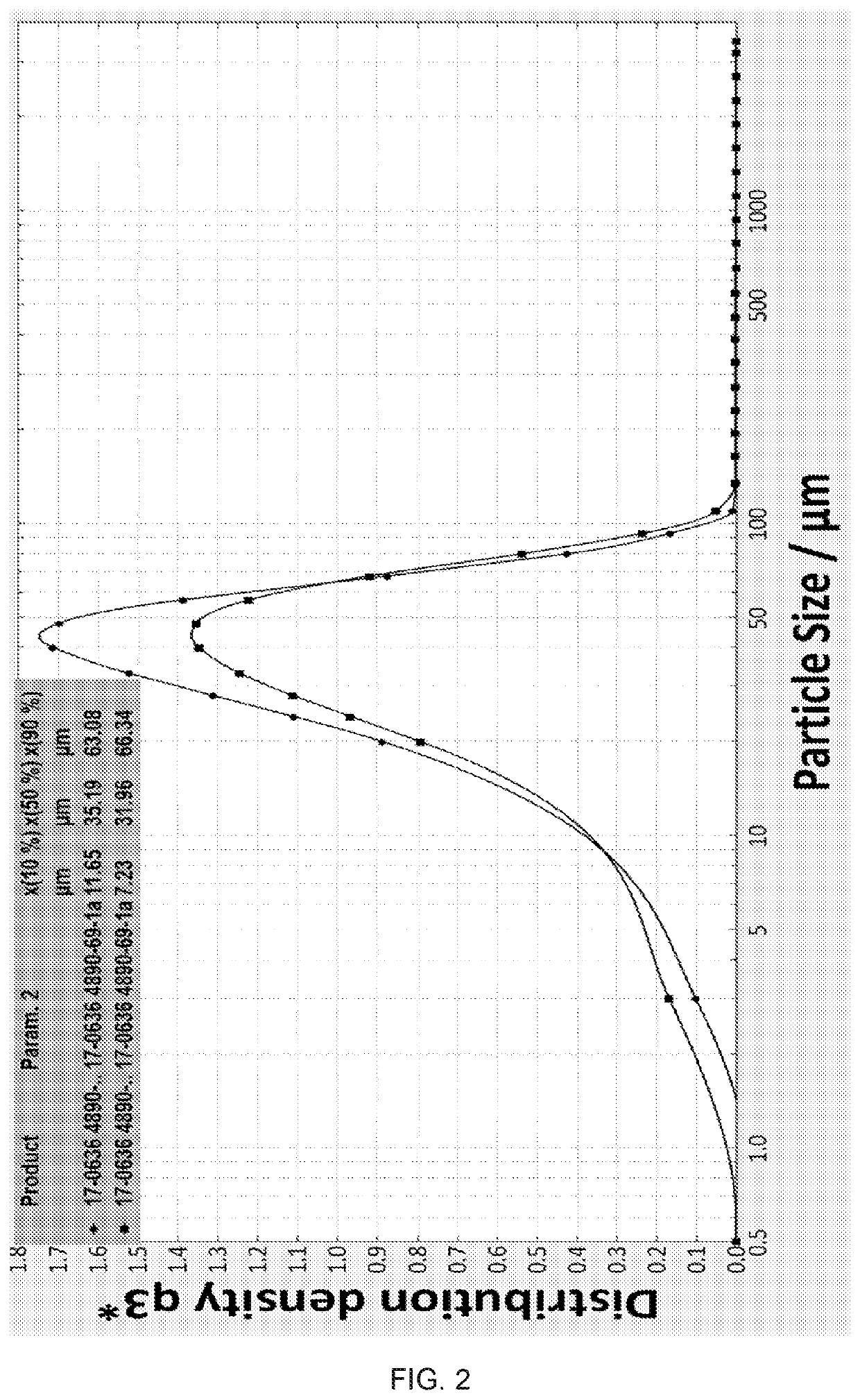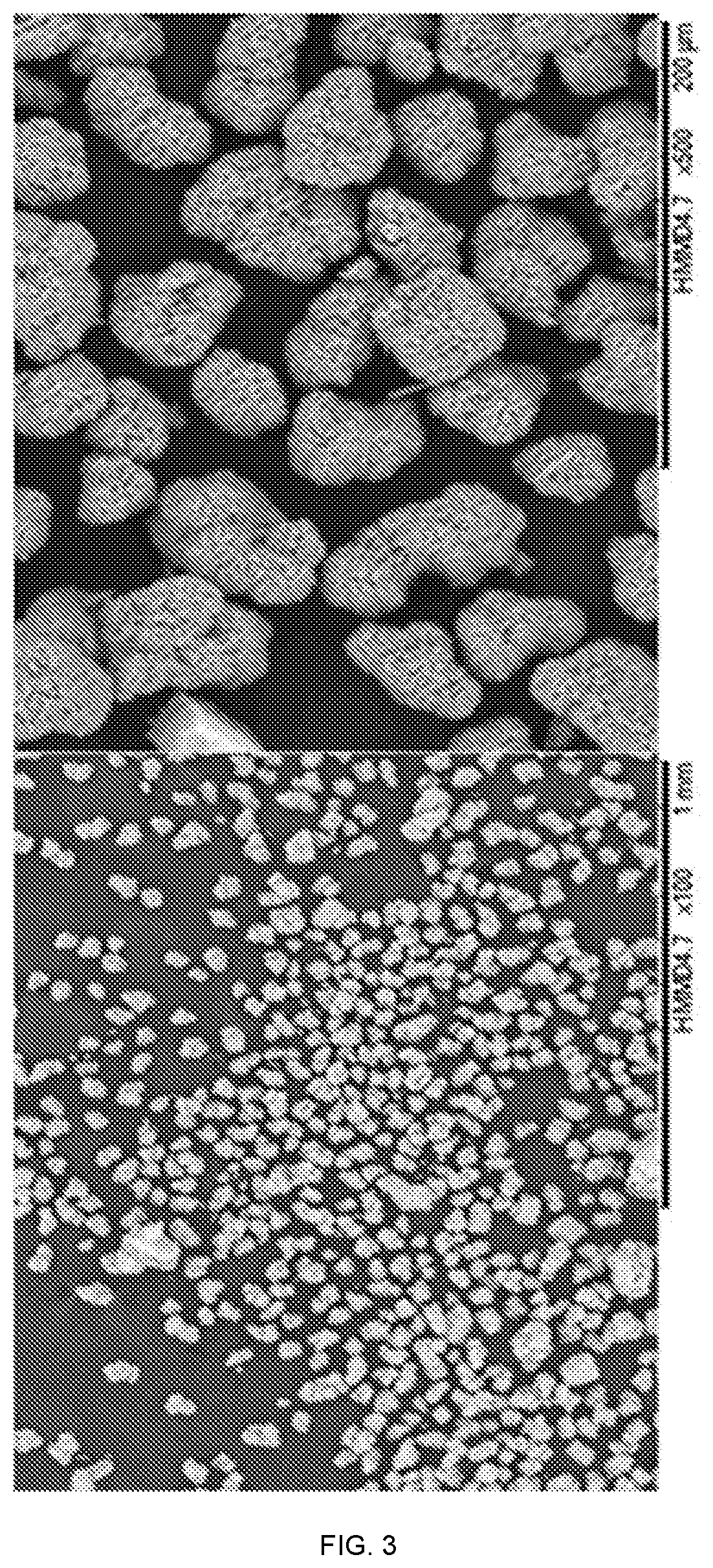Method For Preparing Readily Processable, Thermally-Stable, Phosphorus-Containing Flame Retardant Material
- Summary
- Abstract
- Description
- Claims
- Application Information
AI Technical Summary
Benefits of technology
Problems solved by technology
Method used
Image
Examples
example 1
[0111]An aqueous solution containing 400 g tris-[methylphosphonic acid] aluminum salt, prepared from aluminum trichloride hexahydrate and methylphosphonic acid (MPA), was added to a reaction flask along with 2.5 kg sulfolane. Under mild vacuum the reaction mixture was stirred, and heating was applied to gradually raise the temperature. Water was removed as the temperature rose.
[0112]When about 400 mL water was distilled out of the reaction mixture, the pot temperature was 95° C., and a gel like material deposited on the wall of the reaction vessel. About 0.1 gram of seeding material having a median particle size (d50) of less than 100 μm was added along with 200 mL water and the gel like material disappeared from the wall. Additional episodes of gel formation were remedied with further additions of seeding material and water. Heating continued for about 4 hours over which time the temperature rose to about 120° C. and the desired slurry began to form, at which time the vacuum was re...
example 2
[0114]An aqueous solution of tris-[methylphosphonic acid] aluminum salt, prepared from MPA and aluminum isopropoxide, was added along with sulfolane, at a weight ratio of 100 grams of sulfolane per 15 grams of aluminum salt, to a 4-neck 5 L round bottom flask equipped with overhead stirrer, addition funnel and Vigreux column with Dean-Stark trap.
[0115]The reaction mixture was stirred under nitrogen at 90° C. for 4 hours to afford a homogeneous white suspension. The reaction mixture was then gradually heated to 250° C. and held at 250° C. for 3 hours. The off-white suspension was then cooled to 60° C., the sulfolane was filtered off, and the solid washed with isopropanol (500 mL×3). The solid was then dried in 160° C. oven for 1 hour to afford the product as a white powder (142 g) with 92% yield. TGA conducted in N2 showed that the product was thermally stable to >400° C. (FIG. 4). Elemental analysis (ICP-OES) was as follows: 26.7% P, 8.5% Al.
example 4
[0117]Flame retardant activity of the material produced according to the present disclosure was excellent and no difficulties compounding the material into polymer compositions were observed. UL-94 ratings of V-0@0.8 mm were measured for:[0118]A) polyamide 66 compositions comprising 30 wt % glass fiber, 13.7 wt % FR 1 / 2, and 10% melem;[0119]and[0120]B) polyphthalamide compositions comprising 25 wt % glass fiber, and 16.7 wt % FR 1 / 2,
[0121]wherein FR1 / 2 represents the flame retardant material prepared according to Example 1 in one series of tests and the flame retardant material prepared according to Example 2 in a separate series of tests.
[0122]In particular, as shown in Table 1 below, polymer compositions were prepared and evaluated for flame retardant activity under UL94 testing. As indicated in Table 1, certain of the compositions also included melem (melamine condensation product) as a synergist. Formulations 1 and 2 containing 56.3 parts Nylon 66, 30 parts glass, 13.7 parts fla...
PUM
| Property | Measurement | Unit |
|---|---|---|
| Temperature | aaaaa | aaaaa |
| Temperature | aaaaa | aaaaa |
| Temperature | aaaaa | aaaaa |
Abstract
Description
Claims
Application Information
 Login to View More
Login to View More - R&D
- Intellectual Property
- Life Sciences
- Materials
- Tech Scout
- Unparalleled Data Quality
- Higher Quality Content
- 60% Fewer Hallucinations
Browse by: Latest US Patents, China's latest patents, Technical Efficacy Thesaurus, Application Domain, Technology Topic, Popular Technical Reports.
© 2025 PatSnap. All rights reserved.Legal|Privacy policy|Modern Slavery Act Transparency Statement|Sitemap|About US| Contact US: help@patsnap.com



